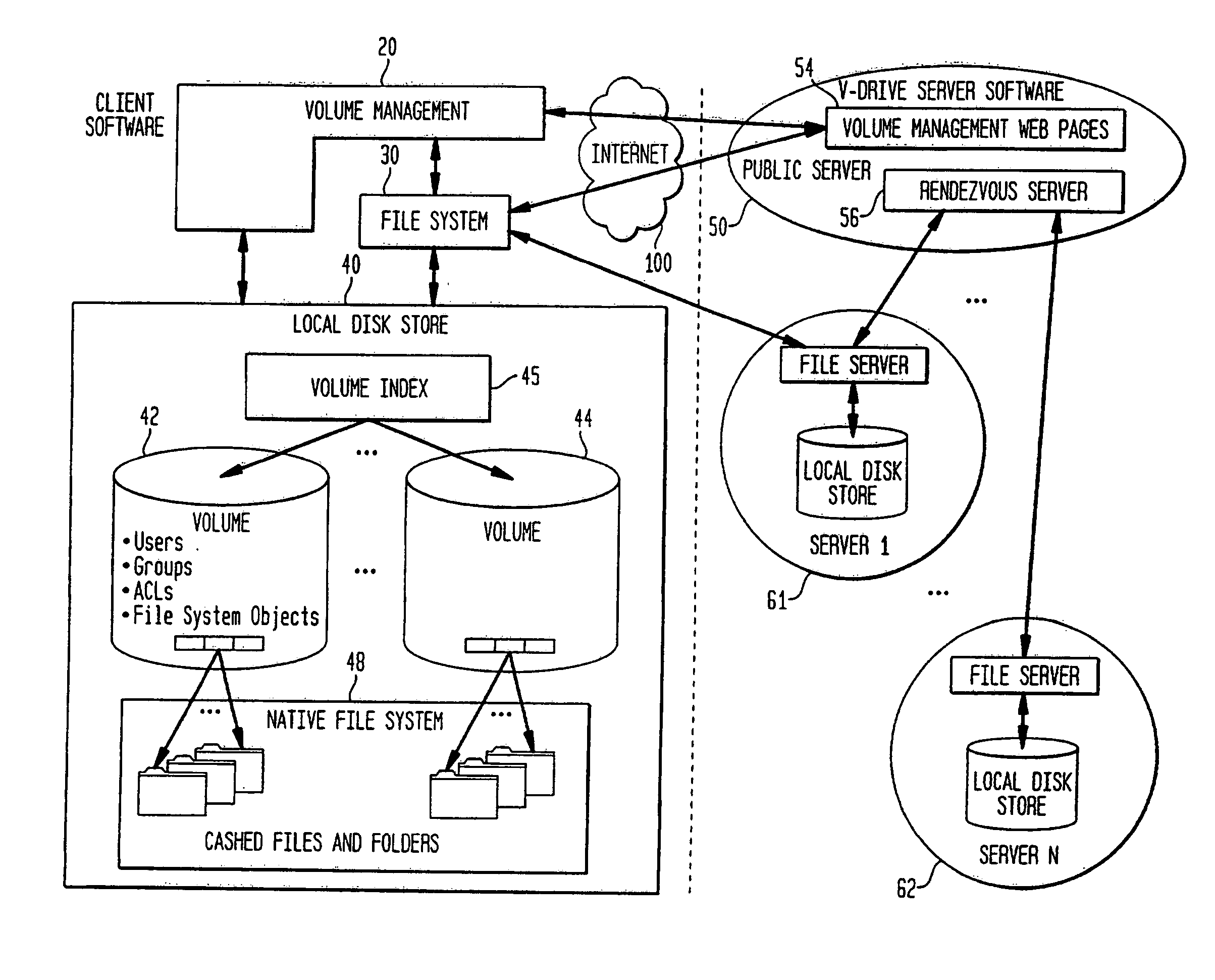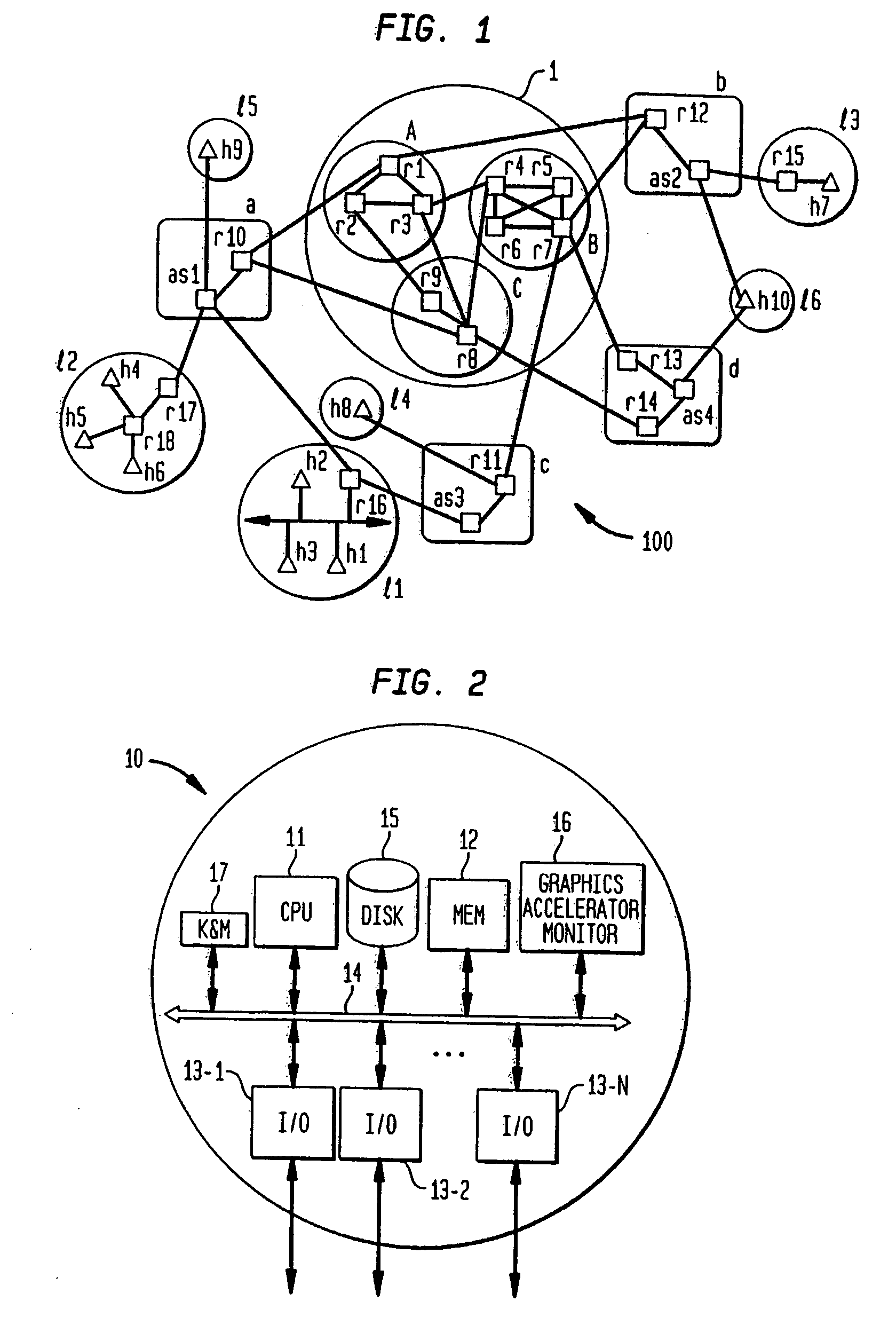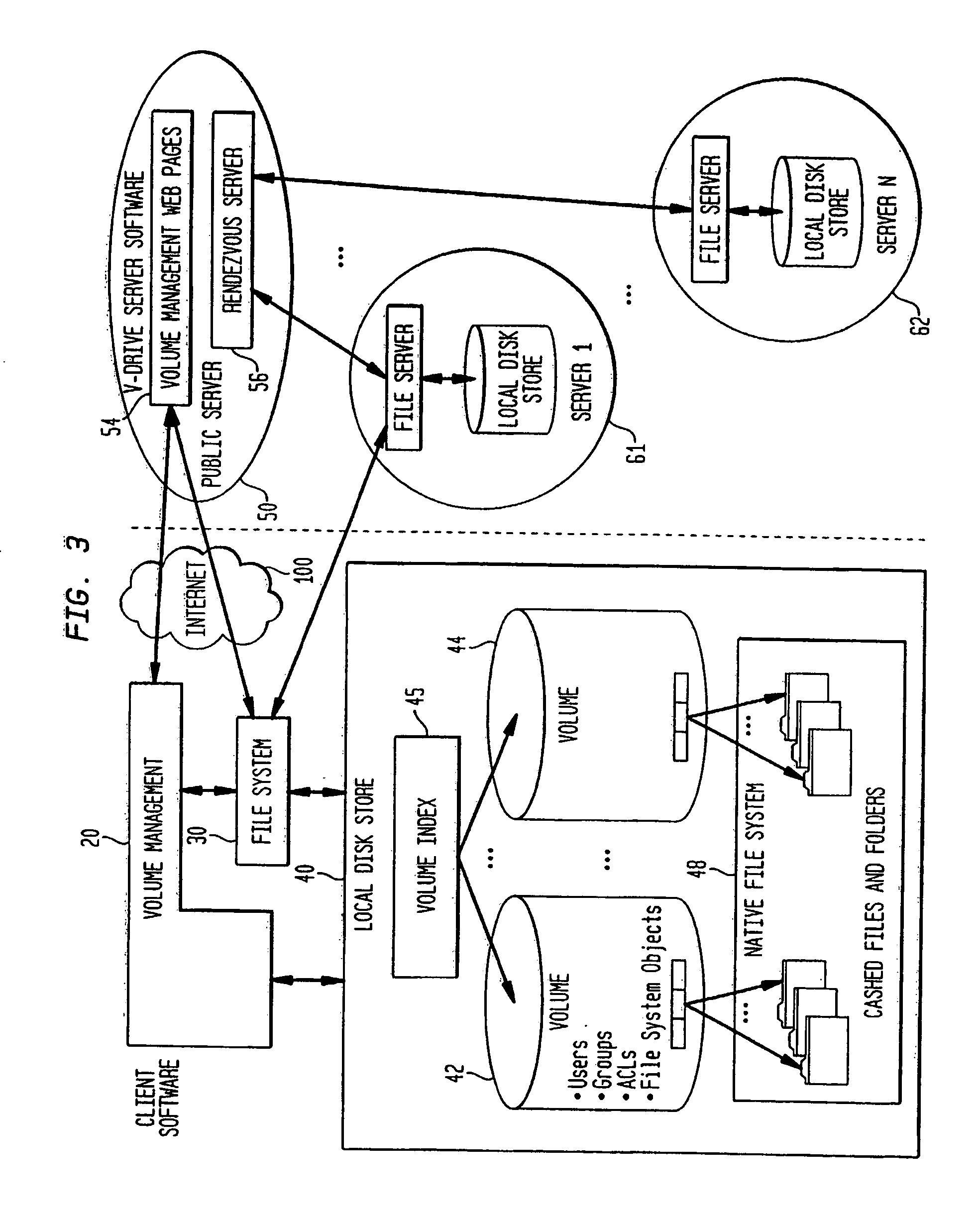Internet-based shared file service with native PC client access and semantics and distributed version control
a file service and file technology, applied in the field of multi-user shared file access service, can solve the problems of sharing, inability to support contemporaneous/simultaneous access to files, limited storage space,
- Summary
- Abstract
- Description
- Claims
- Application Information
AI Technical Summary
Benefits of technology
Problems solved by technology
Method used
Image
Examples
Embodiment Construction
Wide Area Network Architecture
[0051]FIG. 1 shows a wide area network 100 such as the Internet. This network is composed of local networks 11-16, access networks a-d and backbone networks A-C forming backbone 1. Devices r1-r18 denote switches or routers, devices h1-h10 denote computer terminals, and devices as1-as4 denote access servers. Computer terminals typically originate and terminate communications and messages, whereas switches, routers and access servers typically merely route messages and communications to another device in transferring such messages or communications to their intended destinations. Access servers also control access of messages and communications from the networks 11-16 to the rest of the wide area network 100.
[0052] Generally stated, the Internet 100 is an interconnection of a plurality of private networks maintained by network access providers (NAPs) and Internet service providers (ISP), who operate the access networks a-d. The interconnection of the ac...
PUM
 Login to View More
Login to View More Abstract
Description
Claims
Application Information
 Login to View More
Login to View More - R&D
- Intellectual Property
- Life Sciences
- Materials
- Tech Scout
- Unparalleled Data Quality
- Higher Quality Content
- 60% Fewer Hallucinations
Browse by: Latest US Patents, China's latest patents, Technical Efficacy Thesaurus, Application Domain, Technology Topic, Popular Technical Reports.
© 2025 PatSnap. All rights reserved.Legal|Privacy policy|Modern Slavery Act Transparency Statement|Sitemap|About US| Contact US: help@patsnap.com



